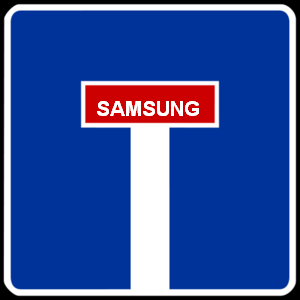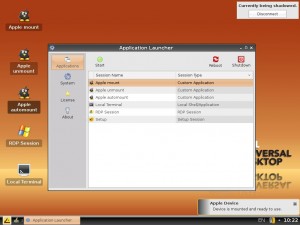Hi,
still a not IGEL related topic but currently this one really steals my nerves: the handling of Firmware Updates for Android Tablet’s by some “major” Vendors, in my case Samsung.
First of all, i really like Android but it seems to be that some vendors try to do there best to destroy this solution. So what is the story, it’s quite simple and maybe it is not only related to the Samsung products. Iam talking about how firmware updates are provided by these vendors and why this has a direct impact on cloud computing and/or company policies.
First of all: What is important for a Company?
1) A working solution. (In this case a Update from Android 4.0.4 > 4.1.2, Android 4.0.4 has a lot of known issues see also here: http://socialcompare.com/en/comparison/android-versions-comparison
2) Same patch level / features on all similar devices.
Can this be guarenteed by some vendors? No!
Why? Because it depends where you bought the device, as example if you bought a Samsung Galaxy Tab 2 10.1 WiFi in Serbia or the Netherlands and you got all devices there: You are lucky and get your updates (Android 4.0.4 to Android 4.1.x in this case) very fast; but what happens if you got the device in the UK, the US, Germany, Austria or Switzerland? You can wait… …wait… and wait and maybe after a couple of months you will receive a update. Is this a single case? No!
What is the reason for this? Quality insurrance? Requires Serbia or the Netherlands less Quality? No!
What else could be the reason? Regional settings or really special regional configurations? No! Until now the only major difference seams to be the Samsung regional code in the firmware.
So what is it?
It’s quite simple: For Samsung and maybe also some other Vendors all Mobile Providers in an Area like Switzerland have to confirm the Firmware release if you got a device without any Provider relationship(?!?). Do this explain why you have to wait months for a working Android Firmware release to you?

Where are the updates? The Samsung dead end road!
But wait, we’re talking about a WiFi only device that was not bought in a mobile store; so why should a Mobile Provider confirm this firmware release? Nobody will tell you, don’t ask about which mobile Provider are blocking a firmware release and/or why; Samsung will not tell you at all. If you got a device from T-Mobile, Verizon or who ever i would unterstand this but for a none provider branded device without the technical ability to connect to any mobile provider: Sorry but this is crazy and not usable for any company environment at all. In other words: Discrimination by area depending on the “acts of mercy” coming from a few hidden mobile providers and the hardware Vendor (Samsung): That’s what you get!
If you look @ google you will find a lot of discussions about this and how people are not accepting this handling by flashing there Samsung device with other tools (and risk the warranty). This might be a solution… But for a company? Mobile Device Management? BYOD and you tell an employee: “Oh, a Samsung device? We will flash it with our tool, you will loose your warranty and maybe we break it to get it working!”. This is no solution and iam not sure if Samsung or any other Vendors working in the same way really have an interest to be in the Tablet market; it doesn’t look and feel like this for me and it’s not enough to have only a good hardware Quality. Mostly the Software win’s a deal, not the Hardware.
So if a customer ask me the next time what type of mobile device/tablet i would recommend, it would by everything but not something like this. Of course you can say… The Galaxy Tab 2 is a end consumer product, regarding my experience it also fit’s for the Galaxy Note Series in the same way. For a company dealing in several areas and claims to be a “major” vendor this is not acceptable, compare it to a Laptop: You will only get an update from Microsoft until all Mobile Providers in your Country accept the update. Sounds funny for a Laptop right? Why do you accept it for your Android based tablet? I will not as long this handling for WiFi only and/or Mobile Provider free devices is not fully changed.
…and if you have enough and only one or two tablets: Update it by your own, there is a tool called Odin and a lot of Websites/Forums available to break this stupid system and flash an other regional firmware on nearly every Samsung Device. A vendor who is not able to provide a usable firmware update to there customers or blow up the process to deliver a firmware with useless rules coming without any sense has not to blame any user for a try to get a working device at all.
If you plan to buy android tablets for your Company: Check the update history for your area in advance and compare it to other areas, if you find a big difference depending on the area: Forget it! Other Vendors do also offer a good hardware quality and the best hardware will not help in case that the Software do not support the things you want to do or work in the way it should do.
Cheers
Michael
P.S.: If you don’t believe me, i can provide everyone my email discussion with the Samsung Support, the Samsung Support confirmed the handling like described above and i asked several times.






